Ever noticed your garden looking droopy despite all that humidity? High moisture in the air can wreak havoc, causing soggy soil and stressed plants. Check your beds for yellowing leaves or mushy roots—signs of trouble from excess water. Stick around to uncover simple fixes, like tweaking drainage with 2 inches of gravel, to save your greens before it’s too late.
Contents
High Humidity Challenges Gardens
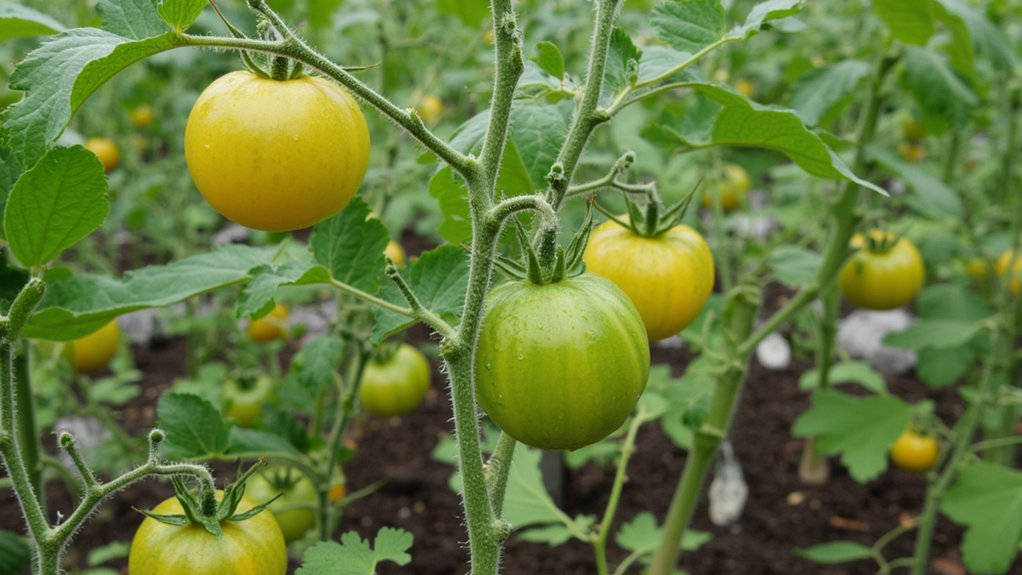
Even though high humidity might seem like a blessing for thirsty plants, it can actually create some tough challenges for your garden. You’ve gotta watch how excess moisture messes with root health. When air’s saturated, say above 80% humidity for days, soil stays soggy, and roots can’t breathe properly.
Here’s the deal: overwatered roots weaken plants fast. You’ll notice leaves yellowing or drooping within a week if drainage isn’t right. Check your soil; if it’s still wet two days after watering, improve it with sand or gravel for better flow.
Also, high humidity slows evaporation, so cut back watering to every 3-4 days. Stick your finger an inch into the dirt—if it’s damp, hold off. Keep your garden thriving with these tweaks!
Mold Growth Begins
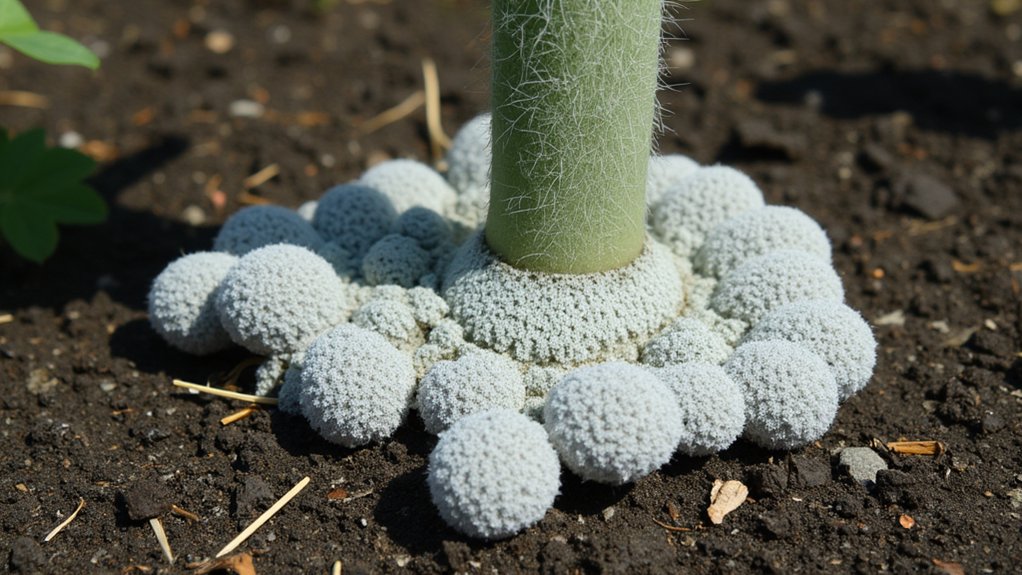
High humidity doesn’t just mess with roots; it also sets the stage for mold to creep in. You’ll notice fuzzy, grayish patches on soil or plant bases, especially if air’s stagnant. This isn’t just ugly; it can choke out your plants’ growth fast.
Check your garden daily, particularly after heavy rain or in shaded spots. Mold thrives in damp, warm conditions—think 75-85°F and over 80% humidity. If you spot it, act quick with a natural fungicide, like neem oil, mixed at 2 tablespoons per gallon of water. Spray evenly on affected areas.
Don’t let mold spread; improve air circulation by spacing plants at least 12 inches apart. Prune lower growth too, so air moves freely around bases.
Excessive Leaf Moisture
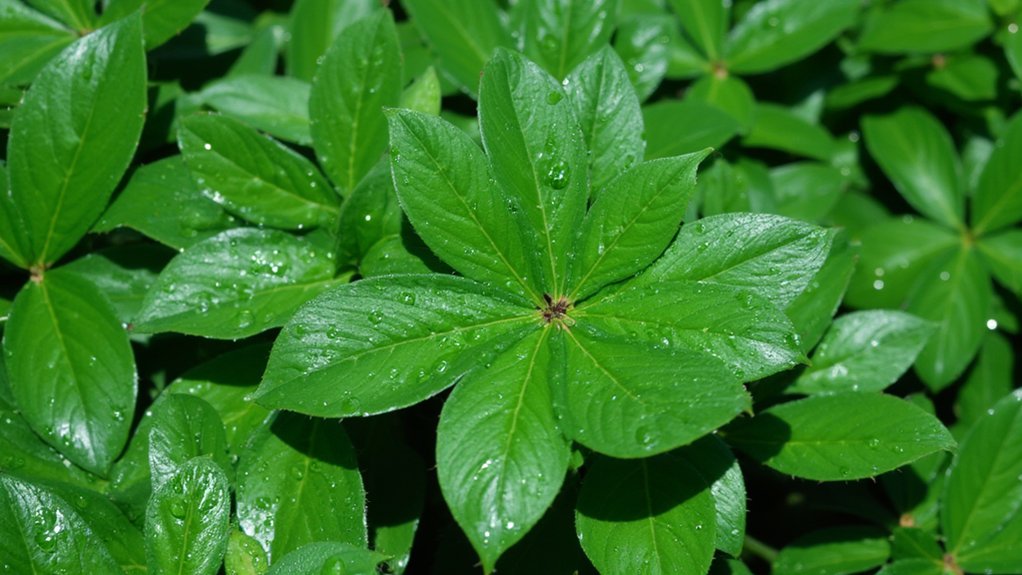
Ever wonder why your garden leaves look like they’ve just taken a swim? In high humidity, moisture clings to foliage, refusing to evaporate. This excess water, often lasting for hours, creates a slick, shiny look on leaves, especially in the early morning or after rain.
You’ve gotta act fast to manage this. Shake off excess water gently from plants, ideally before 9 a.m., to reduce lingering dampness. Then, improve air circulation by spacing plants at least 12-18 inches apart, depending on their size. Prune lower leaves if they’re too dense, cutting no more than 20% of the plant at once.
Don’t let wet leaves sit all day. Check them regularly, and if moisture persists past noon, consider using a small fan nearby.
Root Rot Starts
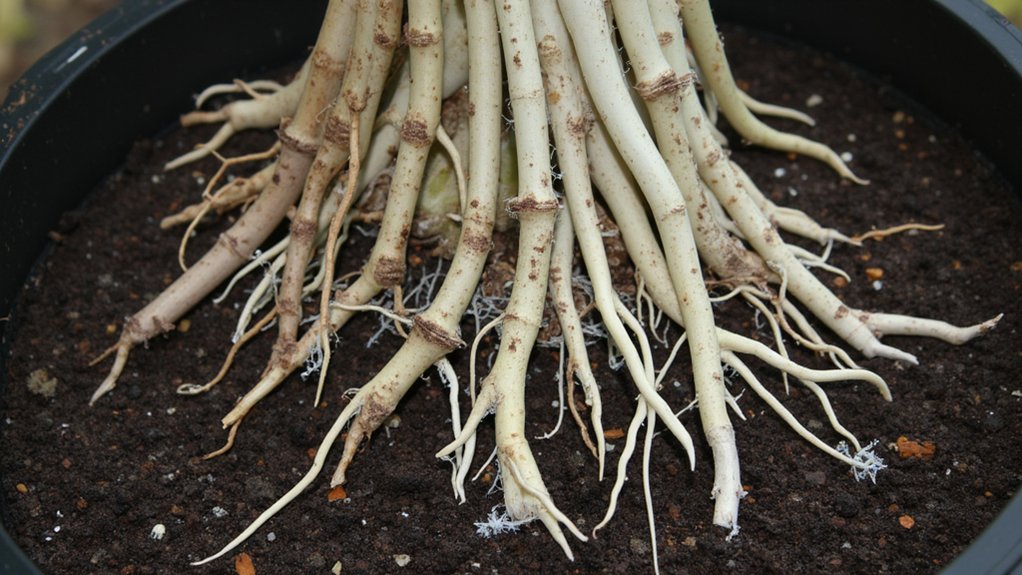
While humidity drenches your leaves, it’s also sneaking into the soil, setting the stage for root rot. You’ve gotta watch out, because soggy soil suffocates roots, letting fungi thrive. This nasty condition can kill plants fast if ignored.
Check your pots and beds for drainage issues—standing water after 24 hours means trouble. Dig a small hole, about 6 inches deep, near your plants. If it’s mushy or smells funky, root rot’s likely starting. Don’t wait around; act quick to save ‘em.
Lift plants gently, shake off excess soil, and trim black, slimy roots with clean scissors. Repot in fresh, well-draining soil, ideally with 30% perlite mixed in. Water sparingly, only when the top inch feels dry. Keep an eye out!
Poor Air Circulation
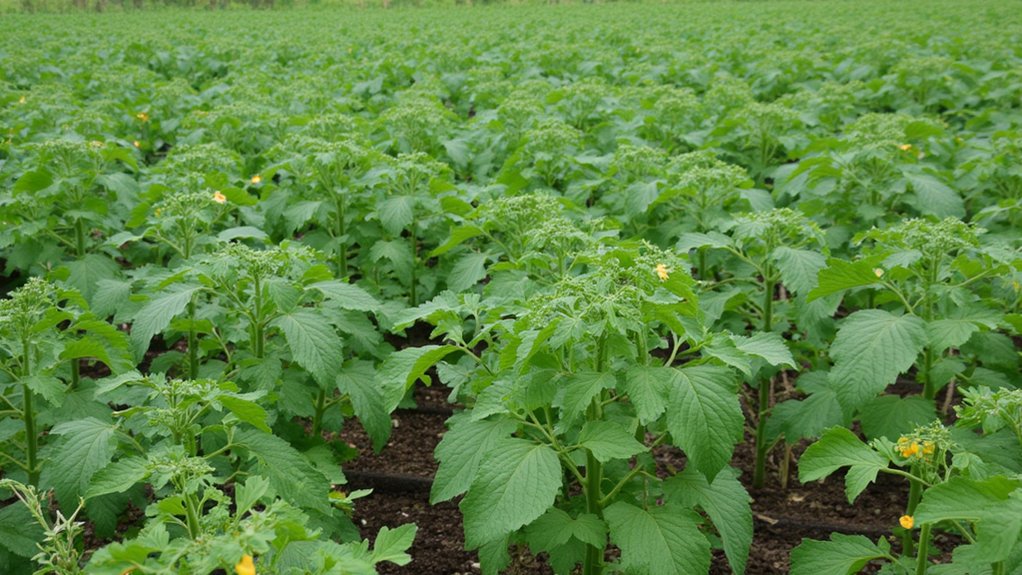
As humidity builds up, poor air circulation can turn your garden into a stifling trap for plants. You’ve gotta keep air moving, or moisture just sits there, choking your greenery. Stagnant air traps heat and dampness, creating a perfect storm for fungal growth.
Pest Infestation Increases
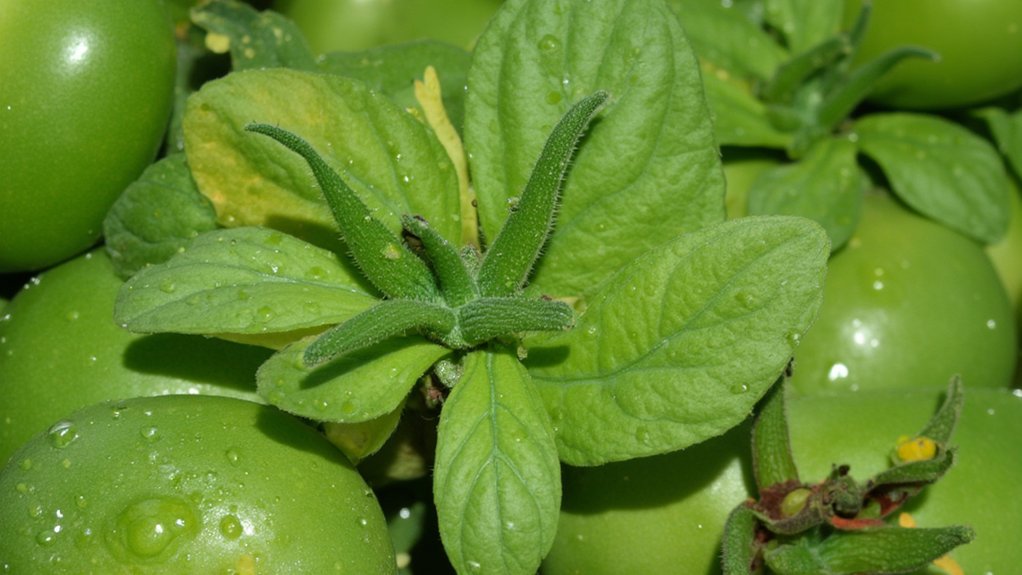
High humidity doesn’t just mess with air flow; it also invites a surge of pests to your garden. You’ve probably noticed more bugs, like aphids and slugs, creeping around. These critters thrive in moist conditions, multiplying fast when it’s damp.
Check your plants daily, especially under leaves, for tiny pests or sticky residue. If you spot trouble, don’t wait—mix a solution of water and 1 teaspoon of dish soap in a spray bottle. Spray affected areas every 2-3 days until they’re gone, ideally in the early morning.
Also, clear out debris and weeds; they’re pest hideouts. Set up yellow sticky traps near plants to catch flying bugs. Keep at it, and you’ll cut down their numbers quick.
Nutrient Leaching Occurs
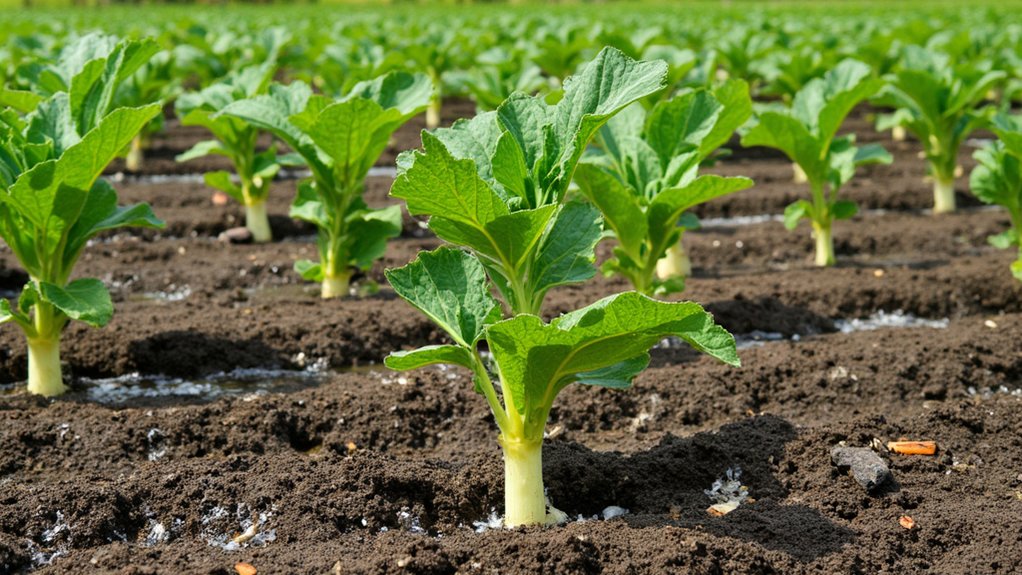
Beyond pest problems, your garden faces another sneaky issue in humid weather: nutrient leaching. You’ve worked hard to fertilize, but heavy moisture washes essential nutrients like nitrogen and potassium right out of the soil. This sneaky process leaves your plants starved, even if you’re feeding them regularly.
Here’s what you can do to fight back. First, switch to slow-release fertilizers; they break down over weeks, not days, reducing washout. Apply them every 4-6 weeks, using about 1-2 pounds per 100 square feet, depending on your soil test. Also, add organic mulch, like straw or compost, in a 2-3 inch layer around plants. It’ll hold soil in place and retain nutrients. Check your garden after heavy rains, and reapply if needed.
Plant Wilting Persists
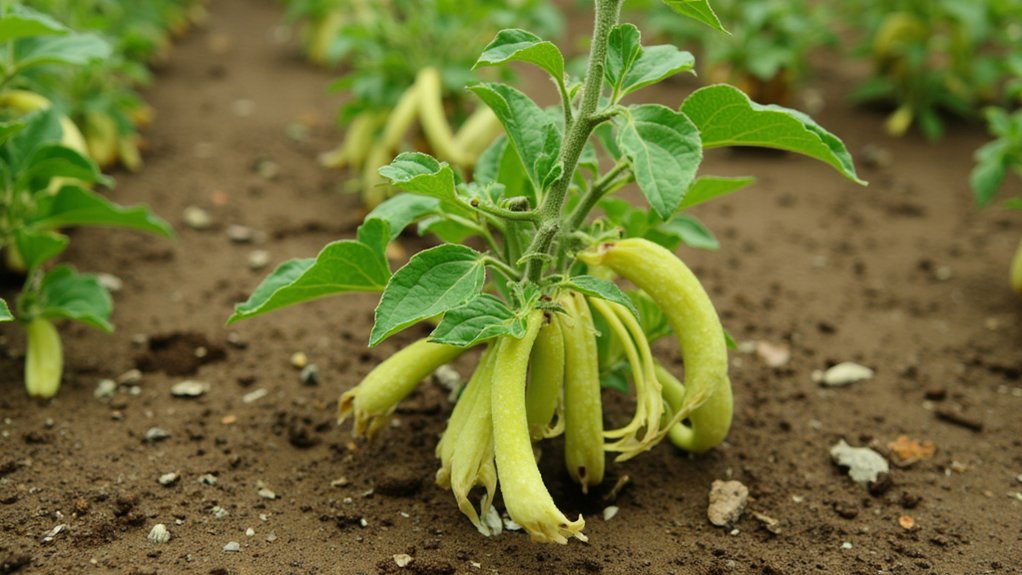
Even when you’ve tackled nutrient issues, you might still notice your plants drooping in high humidity. It’s frustrating, isn’t it? This wilting often happens because excess moisture messes with root oxygen levels, leaving plants stressed.
Check your soil drainage first. If water sits around roots for over 24 hours, improve it by adding coarse sand or perlite, about 20% of your soil mix. Mix thoroughly, then test by watering lightly.
Next, adjust your watering schedule. In humid conditions, cut back to every 3-4 days, ensuring the top 2 inches of soil dry out between sessions. Overwatering’s a common trap, so stick to this rule. Finally, boost air circulation with a small fan near your plants, running 4-6 hours daily, to ease humidity stress.
Stunted Growth Happens
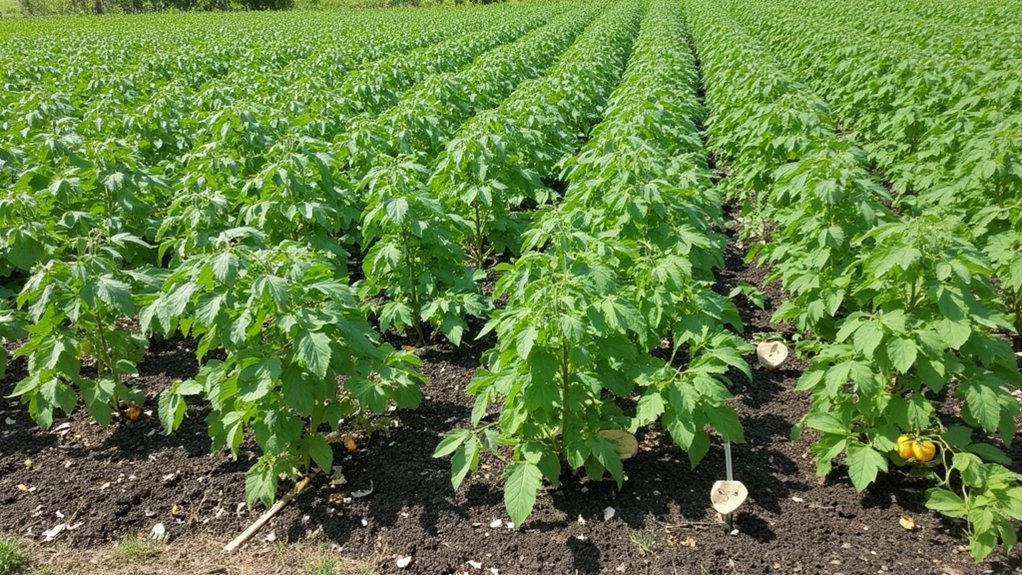
Sometimes, despite fixing wilting issues, you’ll notice your garden plants just aren’t growing as they should. High humidity can stunt growth, slowing down essential processes. It messes with nutrient uptake, leaving roots struggling to absorb necessities.
Don’t worry, though; you’ve got options to tackle this. Start by checking soil drainage—soggy ground suffocates roots, so make sure excess water escapes. Mix in coarse sand or perlite, about 2 inches deep, to improve aeration.
Next, space plants farther apart, at least 12-18 inches, for better airflow. This cuts down on trapped moisture around leaves. Finally, fertilize lightly with a balanced 10-10-10 mix every 3 weeks, supporting growth without overwhelming roots. Keep at it, and you’ll see those plants perk up and stretch tall again.
Pollen Clumping Occurs
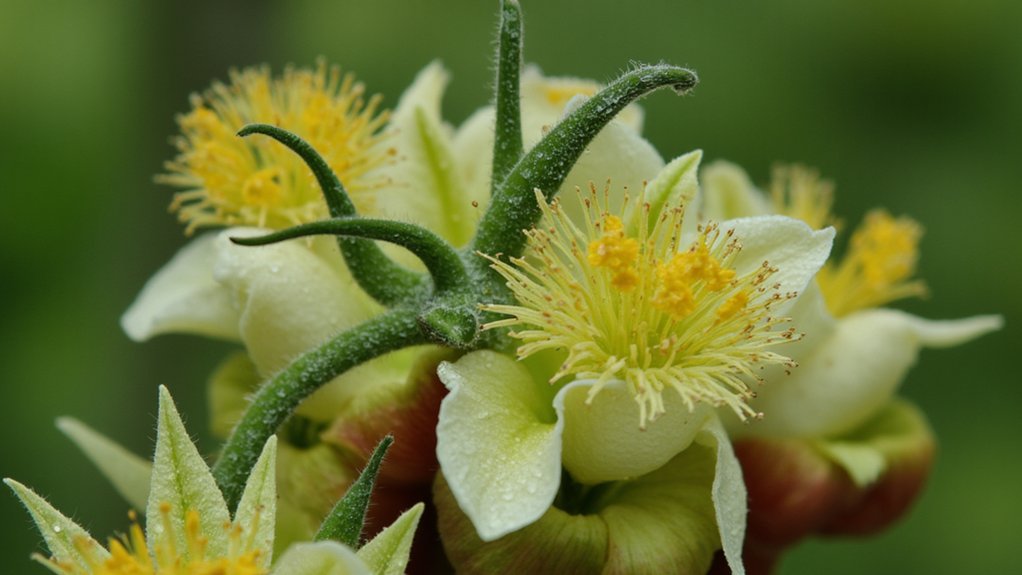
Take a close look at your garden, and you might spot a sneaky issue during high humidity. Pollen clumping’s the culprit, sticking together in moist air. When humidity hits above 70%, pollen grains can’t float freely, messing with pollination. Your plants, like tomatoes or squash, suffer poor fruit set as a result.
Here’s how you tackle it. Shake your plants gently each morning, around 8-10 a.m., to loosen clumped pollen. Use a small fan, set on low, about 3 feet away, for 2-3 hours daily to improve air circulation. This cuts moisture buildup fast.
If that’s not enough, cover blooms with breathable mesh during peak humidity hours. Check daily for stuck pollen, and keep at it consistently.
